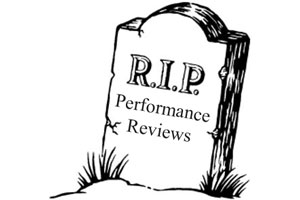 To assist and evaluate team building efforts, here are 21 key questions you need to answer to make teamwork work.
To assist and evaluate team building efforts, here are 21 key questions you need to answer to make teamwork work.
You can work through the questions, either alone or with your team, and answer “yes” or “no”, jot down some notes about why you answered that way and what you can do to improve in that area.
- Are you involving your team members in hiring decisions?
You live with a bad hiring decision for, on average, 18 months. And yet, what management considers a good hiring decision, and what team members consider a good hiring decision, may be dramatically different. Let team members meet potential new hires before an offer is made. Factor their feedback into the decision. - Do you know who your team “slayers” are and have you taken steps to deal with the problem?
Have you identified team “slayers” – those individuals whose behaviour detracts from team performance – and have you spent time with them diagnosing the reason and what to do about it? - Do team members understand the team’s vision, mission, goals, values and expectations?
These are the blueprint for the team’s success, so team members must have a crystal clear understanding of these important components. - Are team members committed to the team’s success?
This is a situation where simply asking isn’t enough. Look for an outward manifestation of commitment. More likely, it will be easier to spot a lack of commitment. Excessive questioning of why people are being asked to do what they do is one sign. Complaining, lack of performance, low morale – all of those would suggest that the commitment to vision, mission, values, goals and expectations may be lacking. - Have team members been trained in teamwork skills?
Is your teambuilding curriculum in place? Training should be ongoing, and whenever possible, team members should attend sessions as a group. - Have team leaders been trained for their role?
There are natural born leaders, but there aren’t enough of them for most organisations. Leadership skills must be developed. In addition to basic team skills, make sure team leaders get special skills training in areas like group facilitation and mediation. - Have you started relationship building with future team members?
Some day you’re going to lose team members. They’re going to quit, move away, or go to another team within the organisation. When you receive notice that they’re leaving, you’ll need to have potential replacements identified and, if possible, already thinking about joining the team. Relationship building with potential team members needs to be done well in advance. - Are you holding regular team meetings that participants find worthwhile?
Regularly ask team members to assess the effectiveness of team meetings. If they feel that team meetings are wasting their time, you’re either meeting too frequently or preparing inadequately. If they feel that they need more information to feel informed, you may not be meeting enough. - Do team meetings include both information and motivation?
You’ve got to have both. Use the analogy of the cherry flavoured cough syrup. When you buy cherry flavoured cough syrup your primary motivation is for the medicinal value – you want to suppress the cough. Because if you really just wanted cherry flavour, you’d buy a pop drink. So why do they put cherry flavour in cough syrup? To help the medicine go down more easily.
You should make meetings interesting, entertaining and motivational to help the information presented go down more easily. Team members need both “how-to” and “want-to”. - Is interpersonal communication effective?
Team communication should provide information that members can use: news rather than gossip, and feedback rather than criticism. Do team members share useful information with each other in an open, honest environment? - Do team members feel well informed about news of the larger organisation?
It’s important that teams don’t operate in a vacuum, but that they understand how they fit into the big picture and how they impact the organisation’s performance. Top managers and others outside the team should be utilised as resources. - What efforts has your team or entire organisation taken to create interdepartmental teamwork?
There is something harder than getting people on the same team to work together, and that is getting people on different teams to work together. Have you made some active attempts to teambuild with other departments within your organisation? - Is your team facing some of the same problems today that they were 60 days ago, and if so, why?
Ignoring significant problems won’t help. After two months, problems that are unsolved are either insignificant or overdue for attention. Deal with problems before they become a source of perpetual frustration for team members. - What feedback has your team given to management and how has management responded?
A team leader once told me that one of his greatest frustrations was that his boss was a “yes man” but that he didn’t represent the needs of their team to management. Does your team or team leader communicate ideas and needs to management? If so, has management responded appropriately and convinced your team that their opinions are valued? - Has the team leader taken time to understand the values, likes, dislikes and needs of every team member?
Because different people are motivated differently, if the team leader hasn’t done their homework in understanding what motivates different team members, they aren’t as far along in team building as they could be. - Does the team deal openly and effectively with conflict?
Have team members learned to use all available approaches to conflict resolution and has the team agreed on a system that allows you to deal with the problems that inevitably arise? The team vision should be the primary agenda being pursued, even in difficult times. - Are all team members open to feedback?
Or is feedback only accepted from the team leader? When a team member has an idea that will help another team member improve their performance, do they offer it? - Can you point to specific innovations that your team has made in the past quarter?
Are you innovating or simply doing things the way you’ve always been doing them and maintaining the status quo? Make sure to reward any attempts at innovation, even if the outcome isn’t successful. Challenge team members to try new things. - Are you operating with a team calendar year?
Teams must be accountable for producing results in time. Have you identified top team goals for the current calendar year and do team members know what those goals are? Use action planning at every team session to translate ideas into results. - Do team members feel there is linkage between individual success and team success?
Do you reward people and recognise them, not just for what they accomplish, but for their contribution in helping the team accomplish its goals? This linkage is critical and must be present if team work is going to work. - What celebrations, formal and informal, have you undertaken to demonstrate appreciation and create camaraderie?
Evaluate results periodically. Regularly and creatively celebrate the team’s efforts and victories. If you’re lucky, you’ll receive accolades from others, but you can’t really control that. Ultimately, it is your responsibility to celebrate your own success.
Guest Author
Mark Sanborn CSP CPAE is an acclaimed speaker, bestselling author and president of Sanborn & Associates Inc., an idea studio for leadership development. For more information, visit www.MarkSanborn.com, http://www.FredFactor.com and http://www.YouDontNeedaTitle.com









